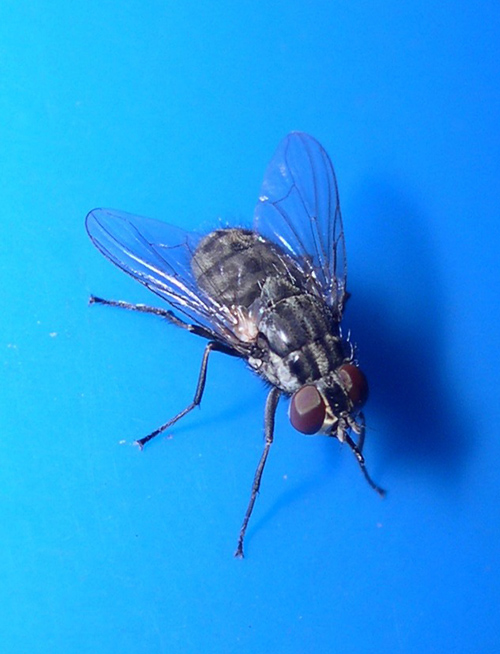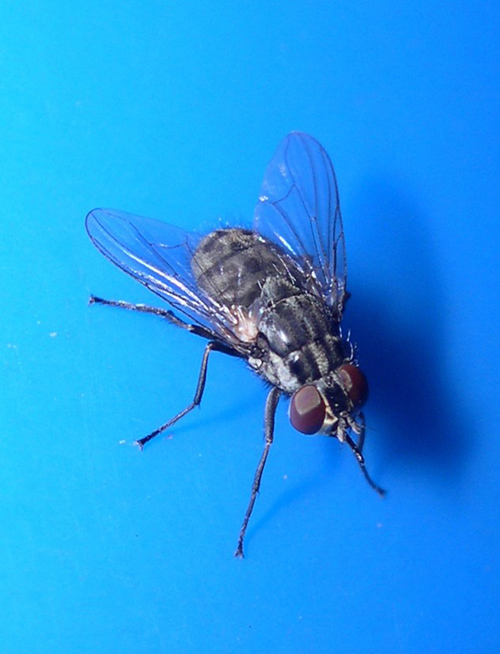Backyard compost piles can be a source of stable flies, and you
really don’t want that. Stable flies look a lot like houseflies
but have one important difference. They bite.

|
About the size of a housefly but with dark, irregular spots on
its abdomen, stable flies have biting mouthparts through which
they suck blood. The mouthpart, or proboscis, protrudes bayonet-like in front of its head.
In the South, stable flies may breed all year, but they’re mainly
pests in the spring and fall. The female lives about a week and
lays 100 to 400 eggs during her lifetime.
The larva is a typical whitish maggot. The pupal case is chestnut
brown and about a quarter-inch long. The complete life cycle of a
stable fly can take 14 to 24 days from egg to adult during warm
weather.
The female fly deposits eggs in spoiled or fermenting plant
matter, such as decomposing grass clippings or hay. Larvae feed
on this rotting organic material, then pupate nearby. Adult flies
emerge several days later.
It’s important, then, to make sure you’re composting properly.
Otherwise, you could be helping supply the neighborhood with
bloodsucking flies.
Both male and female stable flies feed on blood, which they get
by piercing a host’s skin with their syringe-like mouthparts.
They stay on the animal long enough to get a blood meal and then
seek a shaded place along a fence, barn wall or feed bunk or in
vegetation to digest it.
Fierce biters
Stable flies prefer to feed on cattle. But they’ll attack horses,
dogs and other animals, too. At times, stable flies can be
plentiful along the coast, too, feeding on beach-goers’ ankles.
On animals, they feed on the lower portions of the body,
primarily the legs and lower belly. On dogs, they feed around the
periphery of the ear, leaving the margin scabbed and bleeding.
The stable fly’s bite is painful, and cattle try to dislodge them
by stamping their feet, switching their tails and twitching their
skin. When flies are abundant, they’ll try to avoid them by
standing in water or bunching up, each trying to get to the
center of the group.
Horses likewise kick and stamp to deter these flies. They can
make shoeing hazardous for farriers.
Contact your University of Georgia Cooperative Extension county
office to learn more about properly maintaining your compost pile
and controlling stable flies.




